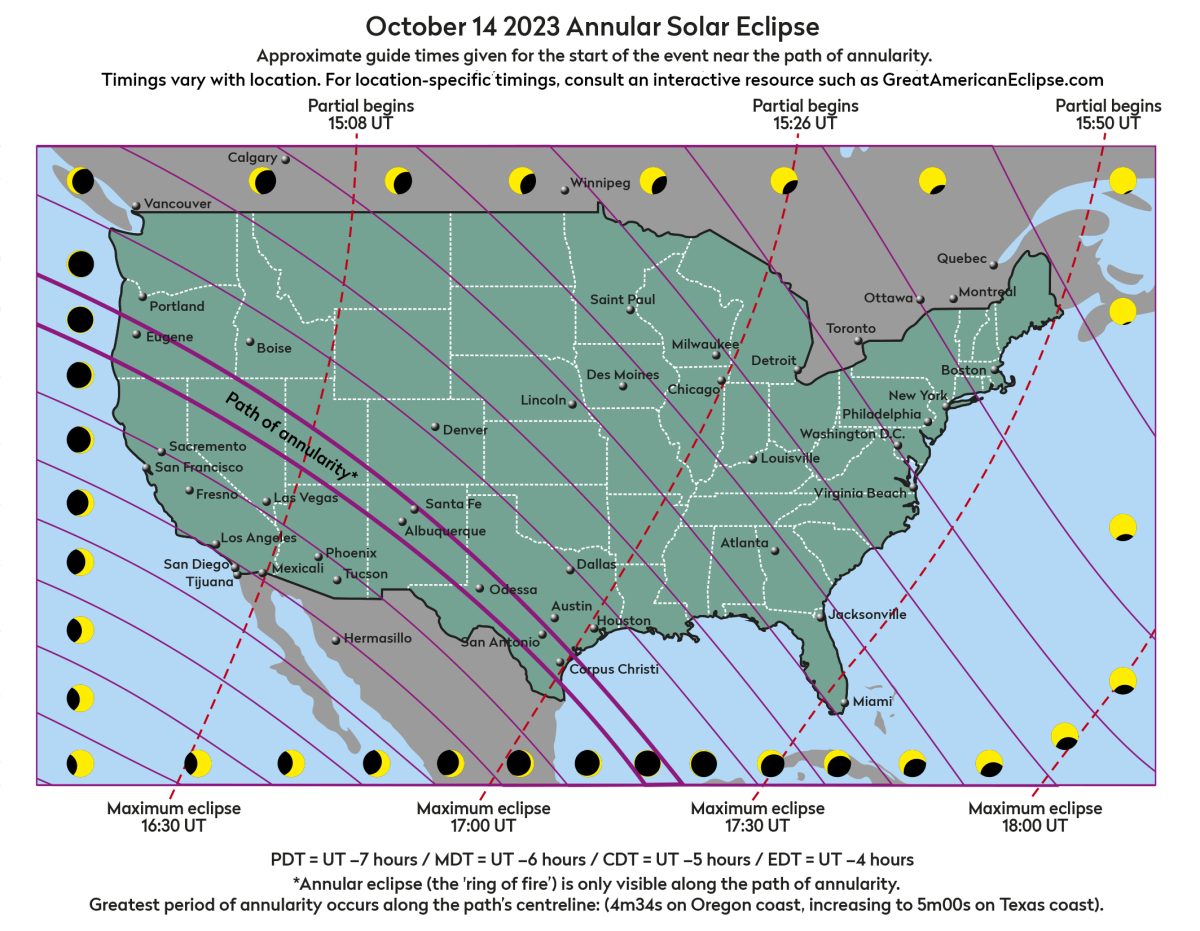Observers will see the Moon pass in front of the Sun during today’s annular solar eclipse.
Observers in North America and South America are eagerly awaiting the annular solar eclipse visible in the sky today.
The ‘ring of fire’ eclipse, as it’s known, is one of the most eagerly anticipated astronomical events of the American calendar.
Today’s solar eclipse will be watched by millions of people and will sweep across 10 countries, including making a good path down through the US.
There will be eclipse parties galore across the US and South America as observers don their glasses and point their solar telescopes to witness the Moon passing in front of the Sun.
Find out more about the event in our complete guide to the October 14 eclipse, and find out where to see it by downloading our October eclipse map.
Annular solar eclipse vs total solar eclipse
Today’s solar eclipse visible isn’t a total solar eclipse, but an annular solar eclipse.
During a total solar eclipse, the Moon covers the entire disc of the Sun, whereas during an annular solar eclipse, the Moon covers a smaller proportion of the Sun, instead leaving a fiery ring in the sky.
This is because the Moon’s orbit around Earth is a slight ellipse shape, meaning sometimes it’s at its closest point to Earth (perigee), and some times it’s at its farthest point (apogee).
An annular eclipse occurs when the Moon is further away from Earth, and so doesn’t cover all of the Sun’s disc from our perspective
During today’s eclipse, the Moon will cover almost 91% of the Sun’s disk.
October 14 solar eclipse location map

How to observe the eclipse safely
Never look directly at the Sun without proper equipment such as eclipse glasses and solar filters.
To observe today’s solar eclipse you could also use a solar projection screen, a solar telescope or even a colander!
Find out more in our guide on how to safely observe an eclipse.
And all of these methods are discussed in our video below on solar eclipses and how to observe them safely.
Watch the eclipse online
It will be possible to watch today’s eclipse eclipse online.
Timeanddate.com have confirmed a livestream on YouTube, which you can see below.
NASA has launched a live broadcast of the October eclipse via NASA TV.
You can also watch a live telescopic view of the October 14 annular solar eclipse via San Francisco science museum Exploratorium‘s livestream.
Are you observing today’s eclipse? Let us know by emailing contactus@skyatnightmagazine.com.